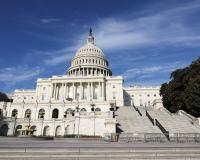
Vibrant Environment
Governance And Rule Of Law
All | Biodiversity | Climate Change and Sustainability | Environmental Justice | Governance and Rule of Law | Land Use and Natural Resources | Oceans and Coasts | Pollution Control

On April 6, 2023, the Biden Administration launched a substantial effort to revise procedures that govern how federal rules are reviewed, revised, and approved within the federal administrative process. A new Executive Order entitled Modernizing Regulatory Review (E.O. No. 14094) makes revisions to longstanding E.O. No.

One of my roles as ELI’s International Envoy is serving on the Steering Committee of the new Climate Crisis Commission established by the International Union for the Conservation of Nature (IUCN). For those of you unfamiliar with the IUCN, it is a fairly unique international NGO with an extensive interdisciplinary and cross-sectoral membership base that includes governments, other NGOs, practitioners, academics, and the like.

The soft voice of the public radio host replaced the fading Ella Fitzgerald song as I drove up to the Silver Spring metro station. She announced that it was International Women’s Day. I smiled at the coincidence, as I was about to meet two Ugandan women, civil society leaders, on a recent, cold, overcast spring day. Who knew what a bright morning laid ahead.

Candidly, I gave up making New Year’s resolutions long ago. We all know about the January spike in gym memberships that falls off a cliff come March. On the other hand, I always look forward to spending time in December looking back and pondering priorities for the year to come. Here are a few of the things starting to circle in my mind.

The Inflation Reduction Act’s (IRA’s) increase of the 45Q tax credit has created a bonanza around carbon removal.

This is Part 2 of a two-part blog series on environmental audits/assessments. The below article discusses the key characteristics of a robust assessment program. To learn more, check out the latest edition of ELI’s Law of Environmental Protection.
What are the key characteristics of a robust assessment program?

It’s a fact recognized by every well-behaved child: the attention always goes to the misbehaving sibling or classmate. Similarly, companies with strong environmental audit/assessment programs rarely receive much acclaim, despite publicizing their efforts in great detail. And why should they? These gold-star companies have minimal interaction with the enforcement arms of federal and state agencies.

When I last sat down to write this column, the Supreme Court had just issued its 6-3 decision in West Virginia v. EPA. As I said at the time, it was disheartening, and many in the environmental law field were assessing how to bounce back from its potential effects limiting agency action. Fast-forward two months, and while the concerns raised by that case aren’t gone, we’ve spun in the other direction.

Clean energy technologies require a variety of minerals of varying degrees of scarcity. As a result, decarbonizing the economy will entail expansion of mineral production—not only through imaginative reuse and recycling, but also through new mines and the permits required to build those mines. Some have called for a loosening of environmental standards to address this growing need.
